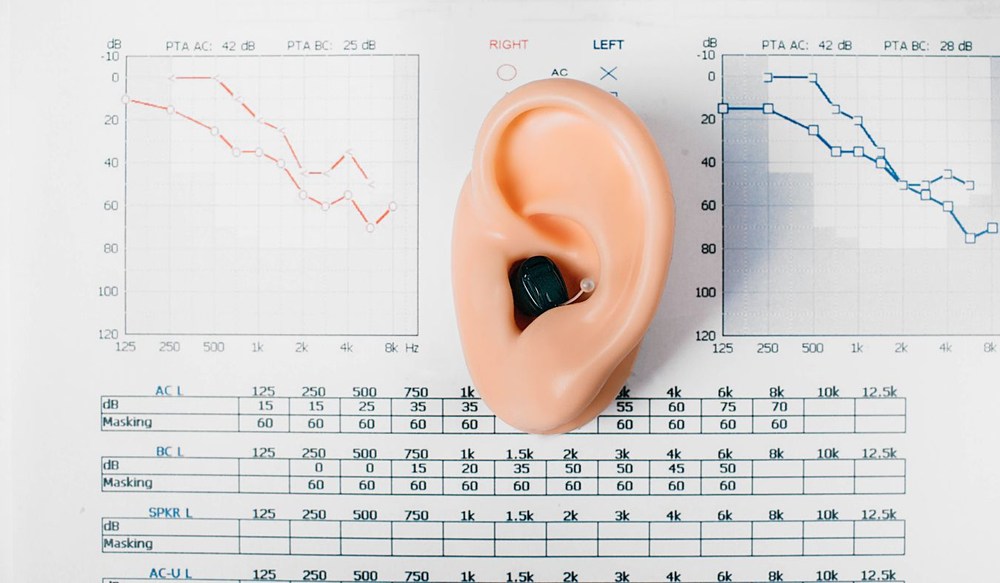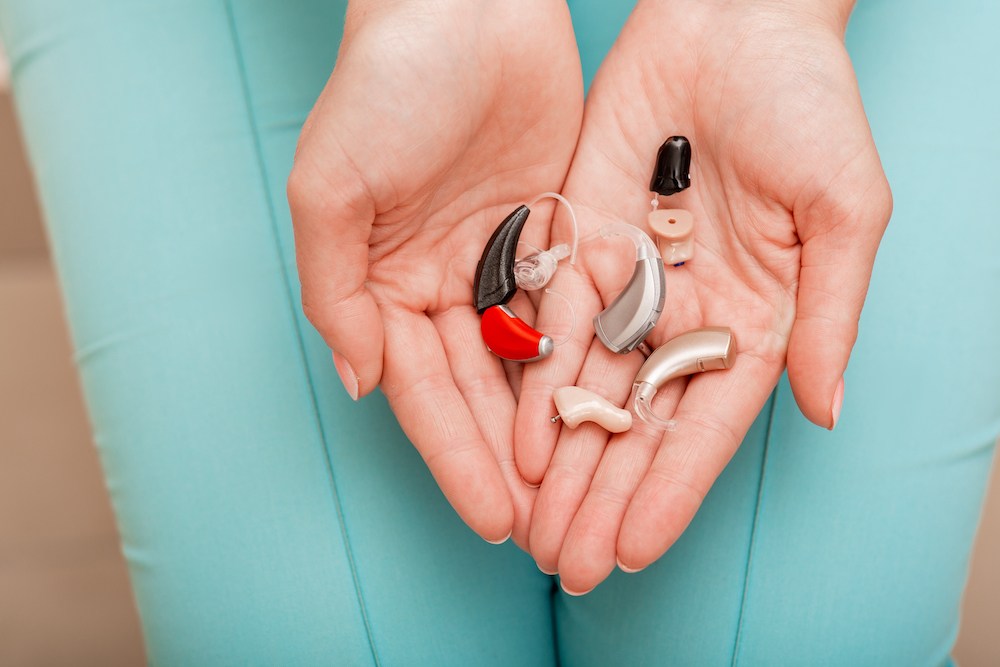Hearing Aid Innovations: What’s New in 2025?
Hearing aid technology continues to improve in ways that directly address

By: admin | October 20, 2025
Hearing aid technology continues to improve in ways that directly address the real-world challenges you face when trying to hear clearly in different situations. The devices available in 2025 are smarter about recognizing where you are and what kind of listening environment you’re in, whether that’s a quiet room at home, a crowded coffee shop or a windy day outdoors. They make automatic adjustments so you don’t have to fumble with settings or apps every time your surroundings change. The goal is to give you better hearing support that works seamlessly with your routine, not something that requires constant attention or adjustment.
What stands out about recent advancements is how they solve practical problems that have frustrated hearing aid wearers for years. Newer devices handle sudden loud sounds more comfortably, connect more reliably to your phone and other technology, and offer longer battery life so you’re not worrying about running out of power at inconvenient times. They’re also designed to be more intuitive, with simpler controls and features that learn your preferences over time. If you’ve been managing with older hearing aids or wondering whether current technology might work better for your needs, it’s worth exploring what’s available now.
Hearing aids have come a long way since their earliest versions, which were simple devices designed to make sounds louder without much clarity or comfort. In the early days, hearing assistance often meant using large ear trumpets made of metal or wood, which funneled sound toward the ear. As technology advanced in the early 1900s, bulky tabletop models using vacuum tubes replaced these manual tools, offering some amplification but remaining inconvenient and difficult to carry.
The introduction of transistor technology in the 1950s marked a major turning point. Hearing aids became smaller, more reliable and more energy-efficient, which allowed people to wear them comfortably behind or inside the ear for the first time. Over the following decades, designs continued to improve as manufacturers worked to balance size, sound quality and battery life. Custom earmolds and more discreet styles began to emerge, giving wearers greater comfort and more natural listening experiences.
Today’s hearing aids are far more advanced than their early counterparts. Modern devices use digital processing to automatically adjust to changing environments and reduce background noise. Many models can connect wirelessly to phones and other devices, allowing for clearer calls, music streaming and personalized sound settings. These changes have made hearing aids not only more effective but also more comfortable and adaptable to everyday life, showing just how much progress has been made over the years.
Digital technology has greatly changed how hearing aids perform and how naturally they fit into everyday life. Modern devices do much more than simply make sounds louder. They analyze and adjust sound in real time to make speech clearer and background noise less distracting. This gives you a smoother listening experience whether you are at a concert, in a shopping mall or enjoying a movie. The sound feels more balanced and natural, helping you stay engaged in the moments that matter most.
Personalization has also become a major part of modern hearing aid design. Many devices now link with smartphone apps that let you adjust volume, switch programs or change settings based on your surroundings. Some even recognize your listening patterns and automatically adapt over time. Bluetooth features make it easy to stream calls, music or shows directly to your hearing aids, creating a more seamless way to stay connected throughout your day.
Advancements in materials and design have also made hearing aids smaller, lighter and more comfortable to wear. Rechargeable options have replaced the need for frequent battery changes, and improved technology helps reduce feedback and other sound interruptions. These updates make today’s hearing aids dependable and easy to use, supporting clear hearing in a wide range of daily environments.
Miniaturization has played a major part in how hearing aids look, feel and function today. Early devices were large and bulky, often worn behind the ear with visible wires or external parts. As technology has advanced, components like microphones, amplifiers and batteries have become much smaller without losing performance. This has allowed hearing aids to take on sleeker shapes that fit comfortably in or behind the ear, making them less noticeable while improving ease of wear.
Smaller parts have also opened the door to new designs that better match personal preferences and lifestyles. Many people now choose models that fit entirely inside the ear canal or are nearly invisible from the outside. Despite their size, these hearing aids can still include advanced features like wireless streaming, background noise control and rechargeable batteries. Miniaturization has made it possible to combine high-quality sound processing with comfort and style, creating options that feel more natural to wear every day.
Today’s hearing aids are designed to provide clearer, more natural sound, even in challenging listening situations. Advanced microphones and computer chips work together to separate speech from background noise, allowing voices to stand out whether you are in a shopping mall, movie theater or family gathering. These updates reduce the effort it takes to follow conversations and help everyday listening feel more relaxed and natural.
You may notice:
Open-fit technology is becoming more common in new hearing aids. This design uses a small tube or dome that sits inside the ear canal but leaves it more open than traditional styles. The open-fit approach allows natural sounds to enter your ear along with the amplified sounds from your hearing aid.
This creates a more natural listening experience and reduces the “plugged up” feeling that some people notice with older hearing aids. Open-fit models are especially helpful for those with mild to moderate hearing loss who want clear sound without blocking their ears completely. Many wearers find these devices comfortable for long periods and easy to adjust to different environments.
Hearing conversations in busy places like shopping centers, movie theaters or concerts can be challenging. Modern hearing aids use advanced noise reduction to help you focus on the sounds you want to hear while reducing background noise. Smarter microphones and faster processing allow the device to separate speech from other sounds, making social interactions and daily activities easier to manage.
Directional microphones also support clearer listening by picking up sounds coming from in front of you while lowering noise from other directions. This helps you follow conversations more easily in active environments.
Battery life has become an important feature in modern hearing aids, allowing you to stay active and engaged without worrying about power running out. Advances in battery technology and energy-saving features mean many devices now last all day or even several days on a single charge. This is especially helpful if you travel, spend long hours at work or attend social events. Longer-lasting power also reduces interruptions during your daily routine, so you can focus on conversations, activities and entertainment without distraction.
Rechargeable batteries are now standard in many hearing aids, making daily use simpler and more convenient. Charging your devices overnight ensures they are ready for the next day, and portable charging options make it easy to keep them powered when you are on the go. Having a reliable power source gives you peace of mind and lets you confidently plan your day, whether you are running errands, spending time with friends and family, or enjoying outdoor activities.
Wireless connections to phones, tablets and TVs are now easier than ever. Many of the latest hearing aids use Bluetooth technology, letting you stream calls, music and other sounds directly into your ears.
A recent study shows that over 60 percent of people with hearing aids in the United States use wireless features to connect to their smartphones or other devices. This technology helps you enjoy clearer phone conversations and listen to audio without extra equipment or wires.
Artificial intelligence is now part of some of the newest hearing aids. These smart features help your devices adjust automatically to different sounds and environments.
AI can improve speech understanding, provide more comfort as sound settings change and reduce the need for manual adjustments. However, these advanced features may increase the cost of the devices, require regular software updates and sometimes need a short period to get used to new settings.
Some of the latest hearing aids now include health tracking tools. These features can measure steps, monitor physical activity and even track how often you are socializing. Some models can also check for signs of falls and send alerts to a family member if needed.
Health tracking tools give you extra information about your daily habits, helping you and your healthcare team notice changes in your activity or routines over time. Hearing aids are now supporting your general health as well as your hearing.
New hearing aids in 2025 are built with stronger water resistance and improved durability. These updates help protect your devices from sweat, rain or accidental bumps, so you can wear your hearing aids during exercise, outdoor activities or unexpected weather without worry. The improved materials and construction also make them more resistant to everyday wear and tear, reducing the risk of damage from drops or scratches. Some models are designed to handle a wider range of conditions, making them suitable for active lifestyles, travel or busy daily routines. These improvements give you reliable performance and make it easier to keep your hearing aids in good working order over time.
Picking a hearing aid with the latest technology can feel overwhelming with so many features available. Start by thinking about your daily activities and what matters most, whether it is clearer sound in noisy places, wireless connections to your phone or simple charging. Talking with your audiologist about new options, like advanced noise control or health tracking, can help you see how these features fit into your routine. The goal is to match technology to your needs so using your hearing aids feels natural and easy.
When upgrading to a newer model, take time to understand the new features and how they work. The audiologist can guide you through adjusting the settings and show you how to get the most out of your device. Spending a little time getting used to the feel and sound of your upgraded hearing aids can make a noticeable difference, helping you enjoy conversations and daily activities with greater ease.
Hearing aids today are built to fit smoothly into your life, helping you focus on the sounds that matter without added hassle. With smarter adjustments, improved durability and features designed for everyday situations, you can feel more at ease whether you’re at home, out with friends or on the move. These updates are about making hearing simpler, more comfortable and more reliable throughout your day.
If you have been using older devices or are curious about how modern hearing aids could improve your experience, connecting with a professional is a great next step. The team at Siouxland Hearing Healthcare, P.L.C. in Sioux City, IA at (712) 266-3662 can help you explore the latest technology, answer your questions and find solutions that fit your lifestyle.
Tags: faqs, hearing aid repair, hearing aid styles

Hearing aid technology continues to improve in ways that directly address
By: admin | October 20, 2025

Hearing aids used to be pretty straightforward devices with limited
By: admin | July 29, 2025

Your hearing aids are with you all day, every day, so they need to work as
By: admin | June 20, 2025
